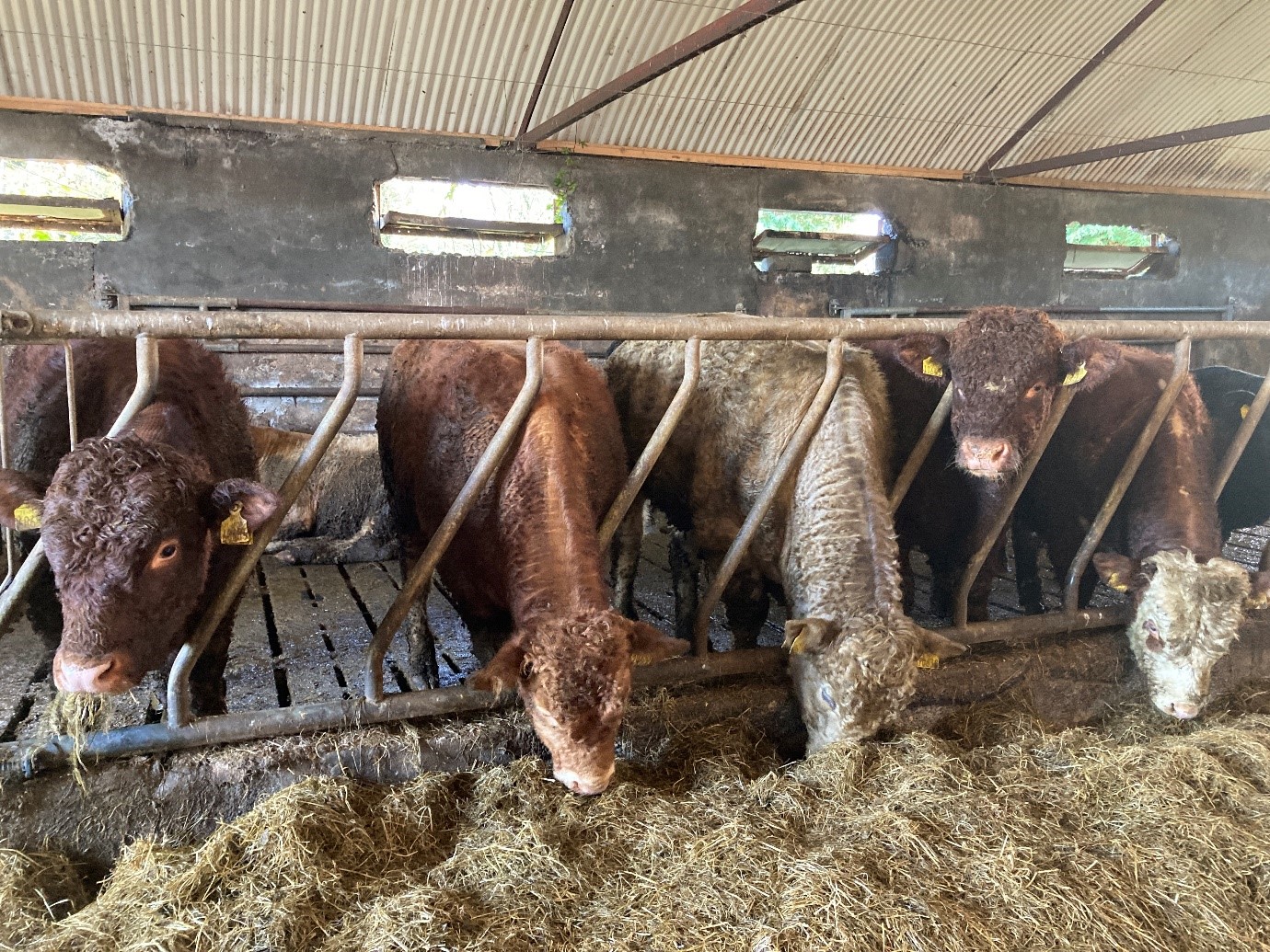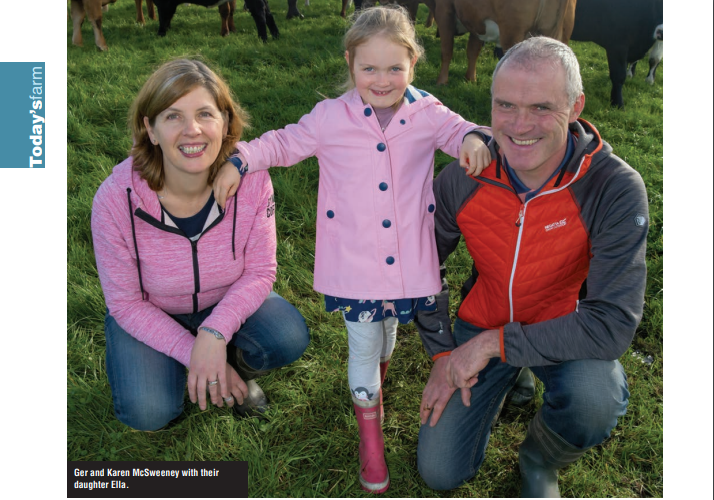Silage quality & pre-calving minerals
- Achieving over 70% DMD silage
- Take a mineral analysis from silage being fed to suckler cows
- Check if the pre-calving mineral you are feeding is meeting the cow’s requirements
Ger took silage samples and the following results came back:
He was very happy with the results as he has been trying to achieve over 70% DMD silage for the last few years to reduce concentrate inputs to his heifers over winter and to the finishing bulls in the growing period.
He achieved this by calculating how many bales of silage would be needed for the young stock over the winter period, and then using this to estimate how many acres he would need to cut to achieve this. He set 10 acres of dry, accessible land containing perennial ryegrass aside specifically and grazed it in spring with last year’s yearling heifers. He fertilised it with 2,500 – 3,000 gallons of slurry from the bull’s slatted tank (best quality slurry) and topped up with chemical fertiliser to ensure enough nitrogen, phosphorus and potassium were available to the crop. The crop was then cut on 1st June in the afternoon when sugars were highest and when the grass was dry. It was tedded out and baled within 48 hours of cutting, with care taken not to damage bales when they were being drawn into the yard.
Based on these results, Ger can feed 0.5kg of a 14% CP ration to his weanling heifers with the 70.52% DMD silage. 5kg of ration will be built up gradually and fed to the bulls on 70.1% DMD silage during the growing period until they reach 500kg. He has decided to front load ration to the heifers to help them to adjust to their shed and winter diet, while still achieving the target weight gain of 0.6kg/head/day.
Ger sent silage which he plans to feed to the cows away for a mineral analysis and is awaiting the results. In the meantime he was examining the pre calving lick bucket that he normally feeds to his cows 6 weeks pre calving which has increased in price to €36/bucket this year. In relation to the macro minerals which must be fed daily, he noticed that the calcium level was very high at 3.6% whereas the recommended feeding rate for in calf suckler cows is 0-2%. There was no phosphorus present whereas 4.5% would be recommended. The magnesium (15%) was comparable to requirements of >17%, but the sodium was also low at 6.6% whereas 15% is recommended. The trace elements in the lick were present in sufficient quantities to meet the cow’s requirements, but these are required in small amounts and can be stored in the body. Ger will be switching his mineral as a result and plans to switch to powdered minerals which will be fed daily on the silage.
The bulls (19) for finishing under 16 months of age were weighed on 21st November. They averaged 411kg, having gained 0.99kg/day since 10th October. Ger has noticed that their dung is quite loose and will be dosing them. They have been given straw as a fibre source, were dosed and will be moved over from 68% to >70% DMD silage.
The last 2 heifers and 2 cows were slaughtered on 29th November. One final cow is due to be slaughtered before Christmas.
7 heifers were killed on 13th October at 21.2 months of age. They had an average carcass weight of 361kg, graded R+4- and made €1778 on average. They were fed up to 4.5kg/head/day ration at grass.
5 cows were killed on 13th October. They had average carcass weights of 429kg, graded R=4= and made and average price of €1972.

Ger was involved in a farm accident earlier this year and was unable to work on the farm for a number of months. After reflecting on this he plans to make a number of changes around the farm:
Read more about the incident here: https://www.teagasc.ie/media/website/publications/2022/Beef—A-farmer-incapacitated—can-the-business-cope.pdf
